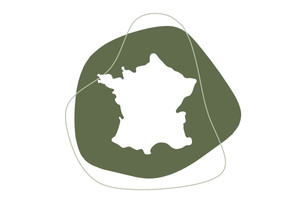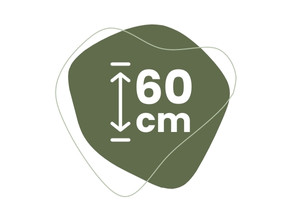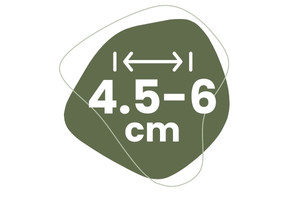Baby Crib: Safety, Models, and Advantages
Categories:
Baby's Room
 Choosing the right baby blanket dimensions according to season and age
Choosing the right baby blanket dimensions according to season and age
 How to attach a headboard (with or without drilling): quick and effective soluti
How to attach a headboard (with or without drilling): quick and effective soluti
 Waterproof sheet or mattress protector: the best solution by age group
Waterproof sheet or mattress protector: the best solution by age group
 27 Original, Useful, and Trendy Christmas Ideas for Teens 2025
27 Original, Useful, and Trendy Christmas Ideas for Teens 2025
 Christmas Activities for Baby: Creative Ideas for Home & Daycare
Christmas Activities for Baby: Creative Ideas for Home & Daycare
The baby crib is an essential piece of furniture for your baby's room. It allows your child to feel secure and comfortable in their room.
There are many models of baby cribs on the market, we invite you to discover the advantages of this type of bed and the different models available.
There is no official age to transition from a crib to a child's bed. The time to take this step is determined by the baby's maturity, as well as practical aspects, such as if a little brother or sister is arriving.
On average, infants show signs that they are ready to leave their crib for a child's bed between 18 months and 3 and a half years old, the range is quite wide.
When your baby starts to feel cramped in their crib, they will let you know in different ways. They notably push stuffed animals and comfort toys with their feet against the bars, twist around to remove their sleep sack, and especially try to escape by climbing the crib bars.
Even when they want to leave their crib, the child remains attached to it. Moreover, if practical considerations force you to accelerate the transition (for example, if you need the space for a new baby), you must take even more precautions to ensure a smooth transition. Take the time to talk to them about it.
To facilitate the transition to a big bed, it's wise to choose the option of removable rails that prevent falls. You can remove them when your child feels completely confident.
.jpg)
Young parents are sometimes a bit lost when faced with the range of bedding intended for babies. It's important to consider the duration of use, comfort, and flexibility of each one. The Moses basket is for very young babies, while the crib can be used until the age of three and a half years. The crib can serve as a Moses basket, but not vice versa.
.jpg)
The Moses basket appeals to parents because this miniature bed is easily transportable for an evening with friends, vacations, or simply from one room to another in the house. The Moses basket reminds the baby of the protective cocoon that was their mother's womb, and they naturally feel good in it.
You must be careful to place the Moses basket in a safe and stable location. It should not be placed precariously on furniture or used as a car transport accessory.
The major disadvantage of the Moses basket is its longevity, which is only two or three months before becoming too small for the baby. It is therefore a significant expense if you consider the ratio with its very short duration of use.
The crib provides a perfectly secure refuge for your infant. The bars form a boundary that protects them from falls and escapes when you have your back turned or during the night. The bars also recreate the concept of a cocoon that reassures the child.
However, the crib is not made to be transported. You will need to use a Moses basket until the age of three months, then more suitable bedding for your travels, such as a pram.
If you wish to skip the Moses basket stage, the crib can be a substitute. To prevent your child from feeling lost in it, you just need to use a bed reducer. It can also serve as a Moses basket (without handles) for your travels.
.jpg)

Compliance with French and European standards requires the markings NF EN 716-1 and NF EN 716-2.

Prefer a panel height of 60 cm or more.

Check that the space between each bar is between 4.5 to 6.5 cm.

If one side is sliding, it must have a safety mechanism to lock it.

The crib structure must be free of chemical products commonly found in plastic. Prefer wood, ideally from sustainable forests.

Be vigilant about coatings. Select water-based paints, without solvents, lead, or other components that could generate harmful emissions.

The mattress must match exactly the size of your bed. Also pay attention to the mattress density. Its surface should be firm but not hard, soft but not too loose, as the baby should not sink into it.

The mattress should be made of natural, healthy, hypoallergenic, anti-dust mite, and antibacterial materials. Bamboo fiber is particularly recommended.
If you feel like a carpenter, you can build your baby's crib yourself. Choose materials that meet the criteria listed above.
Remember to respect standard dimensions to find a standard mattress that fits. Spaces around the perimeter caused by a mattress that's too small are dangerous; with a mattress that's too big, you can't establish a flat surface, which affects the child's comfort.
The crib must always remain exceptionally clean to avoid any contamination, infection, or allergy. There are many products dedicated to cleaning wood. However, to be sure not to use chemical preparations with unknown ingredients, black soap remains the most effective, healthiest, and most economical solution.
Mix equal amounts of hot water and liquid black soap. Remove the mattress from the crib and, if possible, disassemble the bed. Thoroughly clean the structure using a soft sponge soaked in the black soap solution. Pay special attention to areas where dirt may have accumulated. Rinse with a sponge dipped in water.
Dry with a soft cloth before reassembling the bed. Follow the manufacturer's instructions for mattress maintenance.
